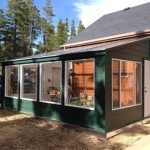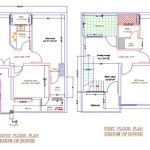Cat House Plans Outdoor: Providing Shelter and Enrichment for Feline Friends
Outdoor cat houses provide shelter and a sense of security for cats who spend time outdoors. Whether for feral colonies, barn cats, or pet cats enjoying supervised outdoor time, a well-designed cat house can contribute significantly to their well-being. This article explores key considerations for choosing and building outdoor cat houses.
Size and Capacity
The size of the cat house should be appropriate for the number of cats intended to use it. A single cat requires enough space to comfortably turn around and stretch out. Multiple cats will need significantly more room. Overcrowding can lead to stress and territorial disputes.
Insulation and Weatherproofing
Outdoor cat houses should protect cats from the elements. Adequate insulation is critical, especially in colder climates. Materials like straw, cedar shavings, and Mylar blankets can help retain heat. The structure should be waterproof to prevent leaks and drafts. Elevated floors help keep the interior dry.
Ventilation
Proper ventilation is essential to prevent moisture buildup and maintain air quality within the cat house. Ventilation holes should be strategically placed to avoid drafts while allowing fresh air to circulate. Consider screened vents to prevent insects from entering.
Materials
Durable, weather-resistant materials are crucial for the longevity of an outdoor cat house. Untreated wood, such as cedar or fir, is a good choice due to its natural resistance to rot and insect infestation. Plywood can be used but needs to be thoroughly sealed and painted with exterior-grade paint. Avoid pressure-treated lumber, which can contain chemicals harmful to cats.
Design and Construction
A simple, sturdy design is often the best approach. A sloped roof allows rain and snow to run off easily. Ensure the entrance is large enough for cats to enter and exit comfortably but small enough to conserve heat. The interior should be smooth and free of sharp edges or protrusions that could injure a cat. Consider adding a removable roof or access panel for easy cleaning.
Placement and Location
The location of the cat house is just as important as its design. Choose a sheltered spot protected from wind, rain, and direct sunlight. Elevate the house slightly to improve drainage and prevent flooding. Consider placing the house near a source of food and water.
Heating Options
In colder climates, supplemental heating can be provided using safe and reliable methods. Pet-safe heating pads designed specifically for outdoor use can be placed inside the cat house. Alternatively, heated water bottles wrapped in towels can provide warmth, but these require regular changing. Avoid using electric space heaters, which can be a fire hazard.
Maintenance and Cleaning
Regular cleaning is essential to maintain a healthy environment for the cats. Remove soiled bedding and replace it with fresh material. Disinfect the interior surfaces with a pet-safe cleaner. Check for any signs of damage or wear and tear and make repairs promptly. Ensure ventilation holes remain clear.
Predator Protection
Protecting cats from predators is a crucial consideration when designing and placing an outdoor cat house. Secure latches or other mechanisms can help deter entry by larger predators. Avoid placing the house near dense vegetation or other areas where predators might hide. Consider adding a secure outdoor enclosure attached to the cat house to provide a safe area for cats to roam and explore.
DIY vs. Pre-Made Cat Houses
Building a cat house can be a rewarding project, allowing customization and control over materials and design. Numerous online resources offer free cat house plans with varying degrees of complexity. Pre-made cat houses are also available from pet supply stores and online retailers, providing a convenient option for those who prefer not to build their own. Consider budget, time constraints, and skill level when deciding whether to build or buy.
Feral Cat Colonies
For feral cat colonies, multiple smaller cat houses strategically placed throughout the colony's territory are often more effective than one large structure. This can help reduce competition and territorial disputes. Work with local animal welfare organizations or TNR (Trap-Neuter-Return) programs for guidance on managing feral cat colonies and providing appropriate shelter.
Enrichment and Comfort
While providing basic shelter is the primary function of an outdoor cat house, adding elements of enrichment and comfort can enhance the cats' well-being. Scratching posts attached to the exterior can satisfy natural scratching instincts. Shelves or perches inside the house can provide additional resting areas. Familiar scents, such as a blanket or toy from the cat's indoor environment, can help reduce stress and provide a sense of security.

15 Diy Outdoor Cat House Plans For Feline Shelter

Image Result For Diy Outdoor Cat Shelter House Plans

15 Diy Outdoor Cat House Plans For Feline Shelter

Outdoor Cat House Plans Myoutdoorplans

Cat House Roof Plans Myoutdoorplans

Outdoor Cat House Plans Howtospecialist How To Build Step By Diy

Outdoor Cat House Plans Unfinished Insulated With Heater Insulatedcathouse Feral

Diy Cat House Simply Designing With Ashley

25 Free Diy Outdoor Cat House Plans Shelter Blitsy

Diy Outdoor Cat Shelter








